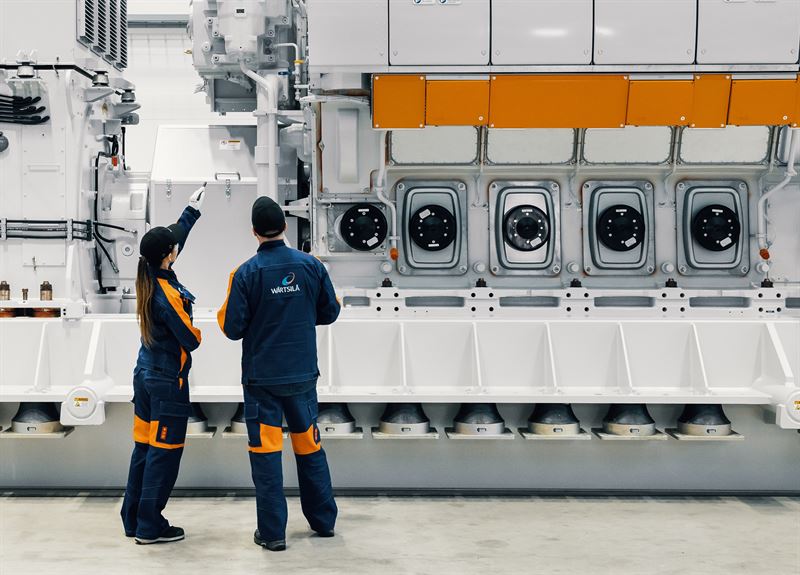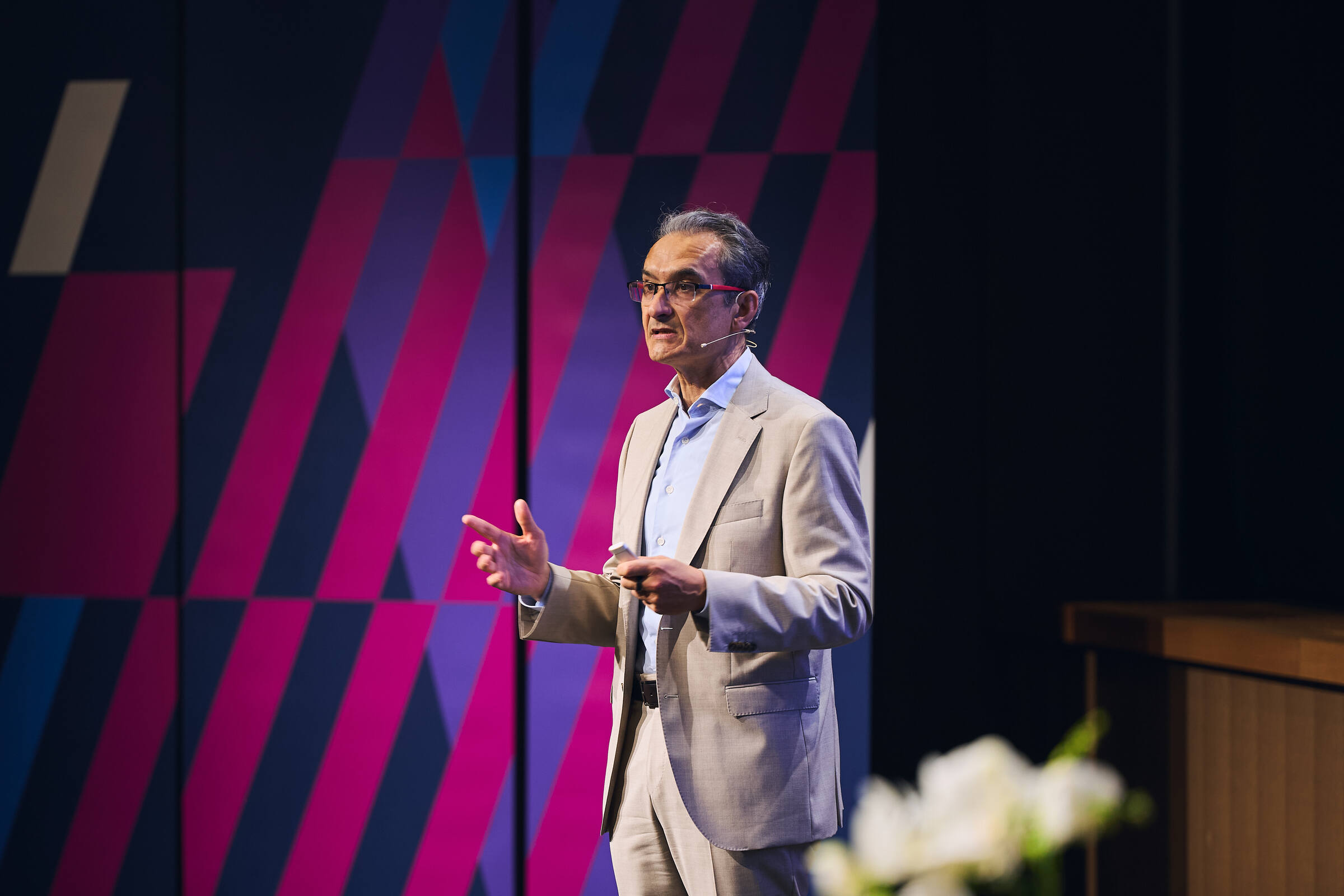At a glance
- Wärtsilä is taking a leading role in the decarbonization of the energy and marine industries.
- Despite a difficult financial situation and challenging market dynamics, the company has taken a bold decision to strategically leverage decarbonization to transform the company.
- Wärtsilä’s journey offers insights into the challenges linked to decarbonization in the industry sector.
When Håkan Agnevall joined Wärtsilä Corporation as president and CEO in February 2021, the Finnish company was facing several challenges. The Covid-19 pandemic had destabilized markets and shrunk demand, and the company was in a difficult financial situation. Wärtsilä is a global leader in the marine and energy sectors offering solutions and services for engine power plants, energy storage, engines and propulsion services, digital ship and fleet systems and more. It operates in industries that still rely heavily on fossil fuels. Both the marine and energy markets find themselves under considerable pressure to transform, reduce carbon footprints and offer environmentally friendly alternatives. Wärtsilä saw an opportunity to make a real difference by addressing climate change. Despite the challenging market dynamics, Agnevall and his leadership team took a bold decision to approach threats as opportunities and use decarbonization as a vehicle to transform the company. Their vision was for Wärtsilä to become a global leader in the decarbonization of the marine and energy industries. Achieving this ambition would require some drastic changes, and a new strategy.
THE BROADER ISSUE
Organizations are under increasing pressure from a variety of stakeholders, including investors, regulators, customers and internal interest groups, to take action on climate change and reduce their carbon footprint. At the same time, governments around the world are setting increasingly aggressive targets for carbon reduction, intensifying the need for organizations to take decisive actions in terms of climate and sustainability. Industries that significantly contribute to global greenhouse gas emissions, such as energy and shipping, are under heightened pressure to rapidly transition to more sustainable and eco-friendly practices. While progress is evident in many cases, several sectors grapple with long-term investment cycles and a certain conservatism in adopting emerging technologies. The transition to sustainable alternatives will take decades, posing multiple challenges for companies:
The reluctance to embrace change slows market adoption. Even if companies’ portfolios already include green technologies, markets may not be prepared to fully adopt them. Customers are hesitant to adopt new technologies, and industries will require time to transition to green solutions. This results in a timing gap between technology maturity and market readiness.
Balancing short-term financial imperatives and long-term strategic goals. As markets slowly transform, it will take several years before organizations can fully benefit from their decarbonization strategy and investments in green technologies. However, businesses face shareholder pressure and must ensure that stakeholders stay involved and committed throughout this transformation journey. Companies have to strike a delicate balance between staying committed to decarbonization and delivering short-term financial imperatives. This challenge is further amplified by a lack of awareness among key stakeholders, including consumers, customers, suppliers and employees.
Uncertainty regarding future technologies. With multiple green technology options emerging, there is significant uncertainty in how technology will evolve over the coming decades. For most companies, this translates into the need to adeptly navigate the uncertainty surrounding future technologies within their product portfolio. Informed decisions must be made regarding the strategic allocation of resources and investments to effectively address this uncertainty.
DECARBONIZATION AS STRATEGIC DIFFERENTIATOR – THE WÄRTSILÄ WAY
In order to turn the company around, the Wärtsilä leadership team chose to find an inspiring purpose that would unify and motivate the company towards a common goal. For Agnevall, having an inspiring purpose was an important leadership tool and a solid foundation for a successful business. Wärtsilä’s new strategy – The Wärtsilä Way – was rolled out to guide the company through its journey. It was formulated as a strategic framework that put decarbonization at the center and defined the company’s purpose, target position, strategic priorities and values. It would serve as a vehicle to communicate the strategy, both internally to employees and externally to stakeholders, helping make a connection with customers and engage employees.
“We focus on shaping a decarbonized future for the energy and marine sectors and playing a leading role in the transition.” Håkan Agnevall, CEO of Wärtsilä
Decarbonization of products and innovations
To overcome the industry’s resistance to change and slow market adoption, Wärtsilä has had to devise strategies to accelerate market adoption, gain a competitive advantage and ensure that Wärtsilä’s portfolio of green solutions gains traction swiftly.
As the marine and energy sectors gradually decarbonize, the need for alternative and flexible solutions increases. In the marine industry, to stay at the forefront of industry developments while minimizing risks associated with early technology commitments, Wärtsilä is developing flexible and future technology enabled systems and engines. These engines are able to operate on various new technologies, incorporate dual fuel technologies and can be upgraded to accommodate evolving technologies.
Decarbonization as an ecosystem play
Wärtsilä recognizes that in order to hasten progress toward decarbonization goals, cooperation with other stakeholders is vital. The company has initiated several partnerships, and is actively engaging with research institutions, policymakers, customers and even competitors to co-innovate and co-create sustainable solutions and drive collective progress. This type of partnership – business ecosystems – is an emerging model that has gained substantial importance and relevance over the past decade.
Decarbonization as a service
Services, which accounted for about 48% of Wärtsilä’s revenue in 2022, play a vital role in the company’s business model. To help customers transition towards sustainable solutions Wärtsilä introduced a decarbonization services business model. The decarbonization services help customers identify and implement the solutions needed to decarbonize their power systems (or vessels), taking into consideration their long-term planning and CO2 emission reduction targets. The services are based on a long-term partnership with customers on the journey to a 100% renewable energy future.
DID IT WORK?
The company is on the right track, advancing toward the transformation goals defined by its new strategy. In 2023, Wärtsilä received recognition from TIME, as one of the 100 most influential companies in the world. Wärtsilä was recognized for its continuous pursuit and focus on innovation and for shaping the decarbonization of the energy and marine sectors. The company is successfully leading the transition towards a 100% renewable energy future through innovative technologies and lifecycle solutions for the energy market.
TAKEAWAYS
In today’s rapidly evolving business landscape, decarbonization has become a critical strategic differentiator. Wärtsilä’s transformative journey offers valuable insights into the fundamental role of a clear vision, effective communication, flexible technology, collaboration and innovation:
- Inspiring purpose and vision: An inspiring purpose and a clear vision help unite and motivate an organization toward a common goal, especially when navigating through uncertain times.
- Significance of communication: Effective communication plays a critical role in addressing the lack of awareness and engaging stakeholders – whether consumers, customers, suppliers or employees – during sustainability transformations.
- Technology innovation and flexibility: Embrace innovation and integrate cutting-edge technologies to drive decarbonization efforts. Flexible technologies can help mitigate risks associated with uncertainty about future technologies.
- Ecosystem approach: Adopt an ecosystem approach by forming strategic partnerships with like-minded business partners within the broader supply chain. Collaboration with stakeholders, industry peers, governments and non-governmental organizations to share knowledge, expertise and resources helps drive market adoption and gain upfront alignment on new technologies.
- Leveraging alternative business models: Embrace alternative business models, such as decarbonization services, to generate short-term financial revenues while maintaining long-term strategic commitment to sustainability. This approach ensures a balance between immediate financial viability and the enduring pursuit of sustainability objectives.
This article is based on IMD case IMD-7-2483, available from The Case Centre at www.thecasecentre.org












